Yanran Wu
Reward-Shifted Speculative Sampling Is An Efficient Test-Time Weak-to-Strong Aligner
Aug 20, 2025Abstract:Aligning large language models (LLMs) with human preferences has become a critical step in their development. Recent research has increasingly focused on test-time alignment, where additional compute is allocated during inference to enhance LLM safety and reasoning capabilities. However, these test-time alignment techniques often incur substantial inference costs, limiting their practical application. We are inspired by the speculative sampling acceleration, which leverages a small draft model to efficiently predict future tokens, to address the efficiency bottleneck of test-time alignment. We introduce the reward-Shifted Speculative Sampling (SSS) algorithm, in which the draft model is aligned with human preferences, while the target model remains unchanged. We theoretically demonstrate that the distributional shift between the aligned draft model and the unaligned target model can be exploited to recover the RLHF optimal solution without actually obtaining it, by modifying the acceptance criterion and bonus token distribution. Our algorithm achieves superior gold reward scores at a significantly reduced inference cost in test-time weak-to-strong alignment experiments, thereby validating both its effectiveness and efficiency.
Dynamic Dual Sampling Module for Fine-Grained Semantic Segmentation
May 25, 2021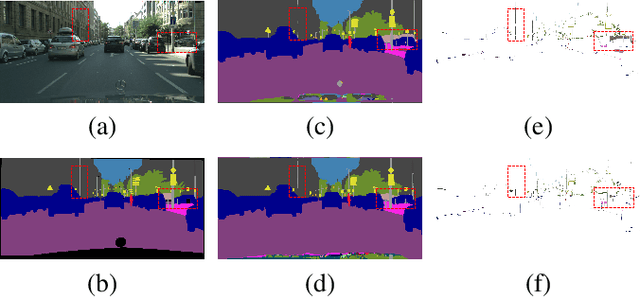

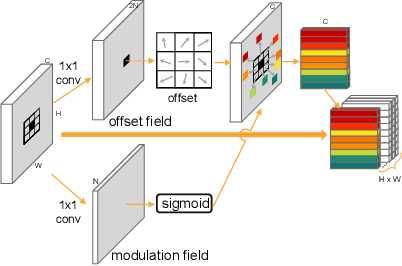

Abstract:Representation of semantic context and local details is the essential issue for building modern semantic segmentation models. However, the interrelationship between semantic context and local details is not well explored in previous works. In this paper, we propose a Dynamic Dual Sampling Module (DDSM) to conduct dynamic affinity modeling and propagate semantic context to local details, which yields a more discriminative representation. Specifically, a dynamic sampling strategy is used to sparsely sample representative pixels and channels in the higher layer, forming adaptive compact support for each pixel and channel in the lower layer. The sampled features with high semantics are aggregated according to the affinities and then propagated to detailed lower-layer features, leading to a fine-grained segmentation result with well-preserved boundaries. Experiment results on both Cityscapes and Camvid datasets validate the effectiveness and efficiency of the proposed approach. Code and models will be available at \url{x3https://github.com/Fantasticarl/DDSM}.
Fast and Accurate Scene Parsing via Bi-direction Alignment Networks
May 25, 2021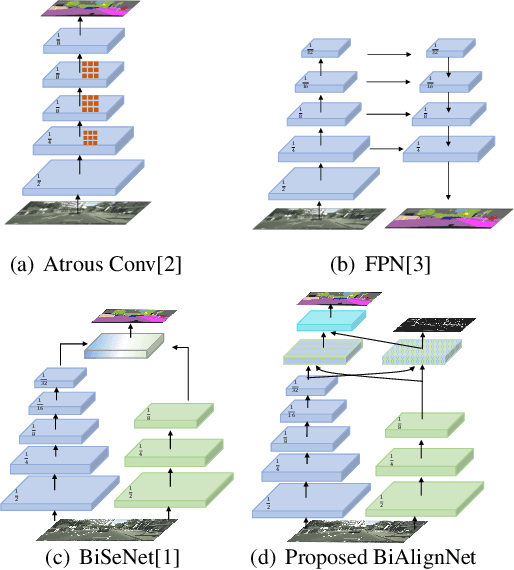
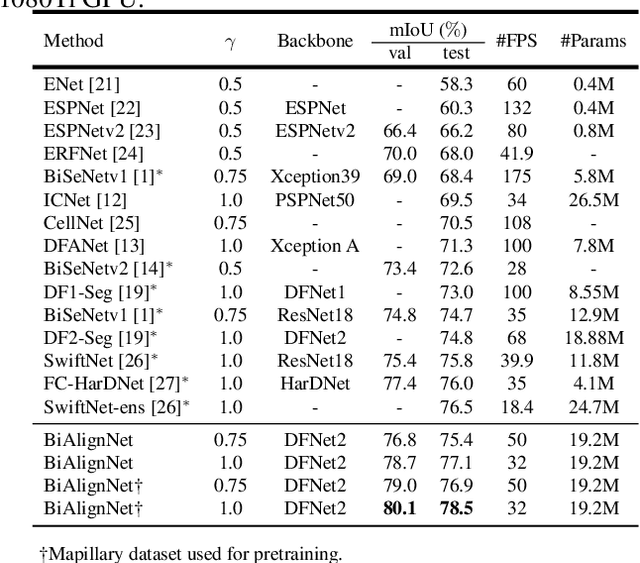
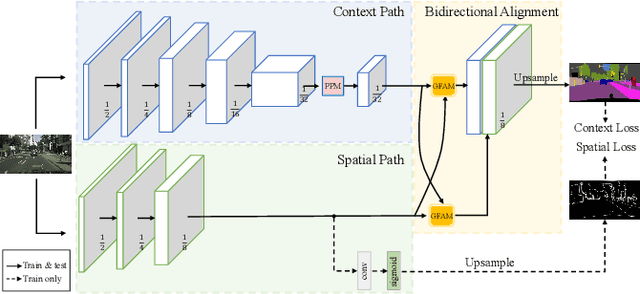
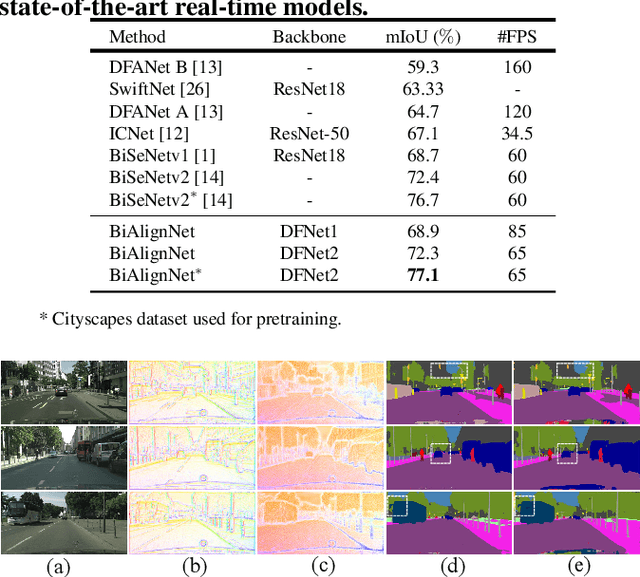
Abstract:In this paper, we propose an effective method for fast and accurate scene parsing called Bidirectional Alignment Network (BiAlignNet). Previously, one representative work BiSeNet~\cite{bisenet} uses two different paths (Context Path and Spatial Path) to achieve balanced learning of semantics and details, respectively. However, the relationship between the two paths is not well explored. We argue that both paths can benefit each other in a complementary way. Motivated by this, we propose a novel network by aligning two-path information into each other through a learned flow field. To avoid the noise and semantic gaps, we introduce a Gated Flow Alignment Module to align both features in a bidirectional way. Moreover, to make the Spatial Path learn more detailed information, we present an edge-guided hard pixel mining loss to supervise the aligned learning process. Our method achieves 80.1\% and 78.5\% mIoU in validation and test set of Cityscapes while running at 30 FPS with full resolution inputs. Code and models will be available at \url{https://github.com/jojacola/BiAlignNet}.
 Add to Chrome
Add to Chrome Add to Firefox
Add to Firefox Add to Edge
Add to Edge